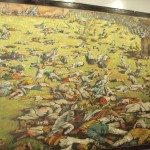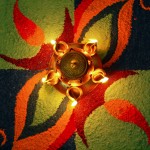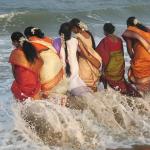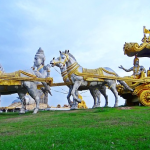 Why one more date based on the astronomical evidence quoted from the Mahabharata? I have made this effort for the following reasons:
Why one more date based on the astronomical evidence quoted from the Mahabharata? I have made this effort for the following reasons:
- All the previous dates by various scholars are from misunderstood quotes, incorrect translations and incorrect conversions between the Gregorian calendar and the Indian astronomical calendar. These scholars here spent a lot of effort to come up with theses dates, and must be commended. However, these dates, if they do not match with all of the original quotes, cannot be accepted.
- Mahabharata & Krishna have been declared as mythology by the Western Indologists from the 19th Century until now. Some Indian scholars and leaders also believe the same. Therefore, I decided to investigate further. I believe in the saying, “investigate before castigate,” and Ronald Regan’s famous quote, “trust but verify.”
Without relying on the stories and myths, I wanted to investigate purely on astronomical and scientific facts and phenomena like the conjunctions, eclipses, earthquakes, meteor showers and comet sightings. Since the powerful PCs with very accurate astronomical programs like Planetarium have become available, it is possible to construct the sky map of any day and time in the past and review the positions of the planets and other astronomical events. A whole new science called “Archaeoastronomy” has now evolved. Eclipses have become very predictable and accurate now, and are a great tool to date the past events. There may be no written or archeological evidence of the ancient past, but the sun, moon and stars are still the same and move per the same natural rules. Therefore, I decided to research the past astronomical phenomena and verify if the epic is history or fiction.
Mahabharata is the closest epic to our time and is replete with many references to the astronomical phenomena. Krishna’s Bhagvat Gita is the most unique philosophical gem; but it would be interesting to see if it came from a real person and time.
My research took me about 2 years of continuous study of the original critical Sanskrit Mahabharata (published by the Bhandarkar Oriental Studies Institute in Pune after 60 years of research).
I used 4-5 different computer programs to compare the accuracy before I finalized on the latest Cyber Sky Planetarium program based on JPL (Jet Propulsion Laboratory) ephemeris 404, with an accuracy of ½ to 1 arc seconds for the periods 3000 BCE and older, and the Delta T value of less than 23 hours.
The full results of my research will be published in a forthcoming book entitled Astronomical Proof of the Mahabharata War and Sri Krishna. The book will include the original Shlokas (stanzas) with translation, detailed computer maps of each event, and its Panchang (Indian astronomical ephemeris) positions of the Sun, Moon, planets, and comets.
This current article is a summary of the salient features in the book. I wish to take the readers on the same journey I took while researching.
The first item of the task was to find the century of the Mahabharata War. The Mahabharata epic is full of the time references right up to the war that Dwapar Yuga (the 3rd part of the 4 Yuga system) is ongoing and the Kaliyuga (the 4th part) would be coming soon. The Surya Sidhanta, a very ancient treatise on the Indian astronomy, mentions that when a new Yuga starts, all 7 planets will line up along the ecliptic (the Earth’s annual path) in the constellation Pisces, just before Aries on a Phalguni Amavasya day (the last day of the year).
There could be a solar eclipse on that day. The Prajapati Smriti and the Matsya Puran provides the same prediction. Western translators of these scriptures doubted this; because it does not make sense that so many planets moving in their own orbits millions of miles apart at high speeds, can line up in one sign on the ecliptic line on a specific day and time.
The Gregorian calendar date for this event is February 18, 3102 BCE at 2:27:30 AM. Anybody with a good astronomy software can verify that this event if did indeed occur. Now, the eastern as well as the western astronomers have all accepted this date for the start of the Kaliyuga. A map on the last page will verify this. It does not show the North Node (Rahu), but both Rahu and Ketu (the south node) were in the same line 180 degrees apart.
This event has not happened for thousands of years before or thereafter. The closest recorded grand conjunction recorded, was in China in 1953 BCE, of 5 planets. With the establishment of the accepted Kaliyuga start date, the dates for Mahabharata War which were after 3102 BCE, are not applicable.
These include Professor N. Achar (3067 BCE), Dr. Balkrishna (2559 BCE), Dr. K.S Raghvan and Dr. Iyengar (3067 BCE), R. Vaidya (2789 BCE). Only scholars Dr. P.V. Vartak (5561 BCE) and Dr. P.V. Holay (3143 BCE) had dates earlier. Out of the two, Dr. Vartak’s date is almost 2500 years earlier and so may not be acceptable. Now, shlokas (stanzas) in the Vishnu Puran, 38th chapter (5.38.8), Bhagvat Puran (1.18.6) and Brahma Puran (212.8), all state that the Kaliyuga started the moment Sri Krishna died.
In Mahabharata Stri Parva, Queen Gandhari, mother of Kauravas had cursed Sri Krishna that in spite of being cable to prevent it, he watched the terrible slaughter of all of her sons and relatives, Therefore, Krishna would die in similar circumstances with his kith and kin, alone, wandering in a deserted place from a very frivolous weapon in 36 years.
The Kaliyuga start date of 2-18-3102 BCE did also have a solar eclipse and a back to back lunar eclipse in two weeks similar to the Mahabharata War. There were earthquakes with meteor showers on both dates, and on the lunar eclipse day, a giant tsunami drowned the Dwarka city, which Krishna had advised to vacate.
With Krishna’s death also established now on 2-18-3102 BCE, his birth dates by scholars Dr. Vartak (5626 BCE), n. Achar, Sampath Ayengar and Sheshgiri (3112 BCE), are no more applicable.
Now we will proceed to place the Mahabharata War start’s month and day. Again, as written in Mahabharata, Bhishma, the grandfather of both the Kauravas and Pandavas, passed away on a winter solstice day at midnight, when the moon was in Rohini (Alderberan) star.
Bhishma declares that it has been 68 nights since the war started, and 58 nights, since he was lying on the bed of arrows. As the Sun has turned to go north, he is ready to die. The winter solstice was on January 14 in that time period. The day was Magh month (bright half, eight’th day per the Indian calendar).
Counting backwards, 7 nights of Magh month, plus 30 days of Pousha month plus 30 days of Margashirsha month, the 68 night and the war start day would be the Kartik month Amavasya (new moon day).
This would be on November 6th.
It is well known from the Mahabharata quote in which Krishna gives the message to Karna, that the month of Margashirsha was very suitable and so the war should start on a Shakra Amavasya day (the day when the moon would be in Indra’s star of either Vishakha or Jyeshtha). The night before the war, Sage Vyas, who made several astronomical observations, mentions that he has seen the Lunation periods 14, 15, 16 days apart but never 13 days apart (tithis to be exact.
A day is not a tithi, since a tithi is based on the lunar phase at the sunrise and when the difference between the Sun and the Moon is 12 degrees). He also mentions it to be an Amavasya with an unseen solar eclipse, followed by a lunar eclipse in 13 tithis.
Like all scholars, I also took 36 years per the Gandhari’s curse, added to 3102 BCE to find the eclipses around November, from the program, “Lunar Phases and Eclipses”. However, there were no back to back November eclipses found in years from 3102 to 3140.
The only year which met all the eclipses criteria was year 3126 BCE, when there was Amavasya on 5th and 6th November (Amavasya and solar eclipse started at 8:37 PM on 5th) and the following full moon in 13 tithis (not days) on November 19-20, both days. The earlier lunation also had occurred 13 tithis before on October 21-22 (Kartik Purnima).
Since all these events matched except the 36th year, I revisited the original verse, and found out that there were two different letters used in the Sanskrit word for 36th. One which all scholars had accepted was “shati trimshe” (in the 36th year). But the Bhandarker critical edition gave the word “shati trymshe,” meaning in the part of 36 years. (When people write down words recited by rote memory for generations such mistakes are normal). So the curse did have finite circumstances but not the finite time. Thus our war start date of November 6th, 3126 BCE matched of all the quotes and criteria. In those days, large number of years was grouped as Tapas or 12 years. 36 years represented the maximum 3 Tapas time, which actually happened in 2 Tapas or 24 years or 2/3rd part of 36 years.the
I proceeded further to check the dates of all associated events for a match with computer generated sky maps, planet by planet. They all did match including two surprise observations about Neptune and Uranus! There would be more interesting information about the Rohini Shakat Bheda (piercing the star Alderberan Cart) by Saturn, which is indicative of terrible manslaughter.
I will present the summary of this information in the next article to follow. I will provide more information about why the western scholars, as well as Indian scholars, missed these dates and how Archaeoastronomy in this computer age, works (when the times are converted properly).
Kaliyuga map with alignment of 7 planets along Earth’s ecliptic (the Earth’s annual path) in the constellation Pisces

Learn about Hinduism, Sikhism, Buddhism, and more in Patheos’ Library.












